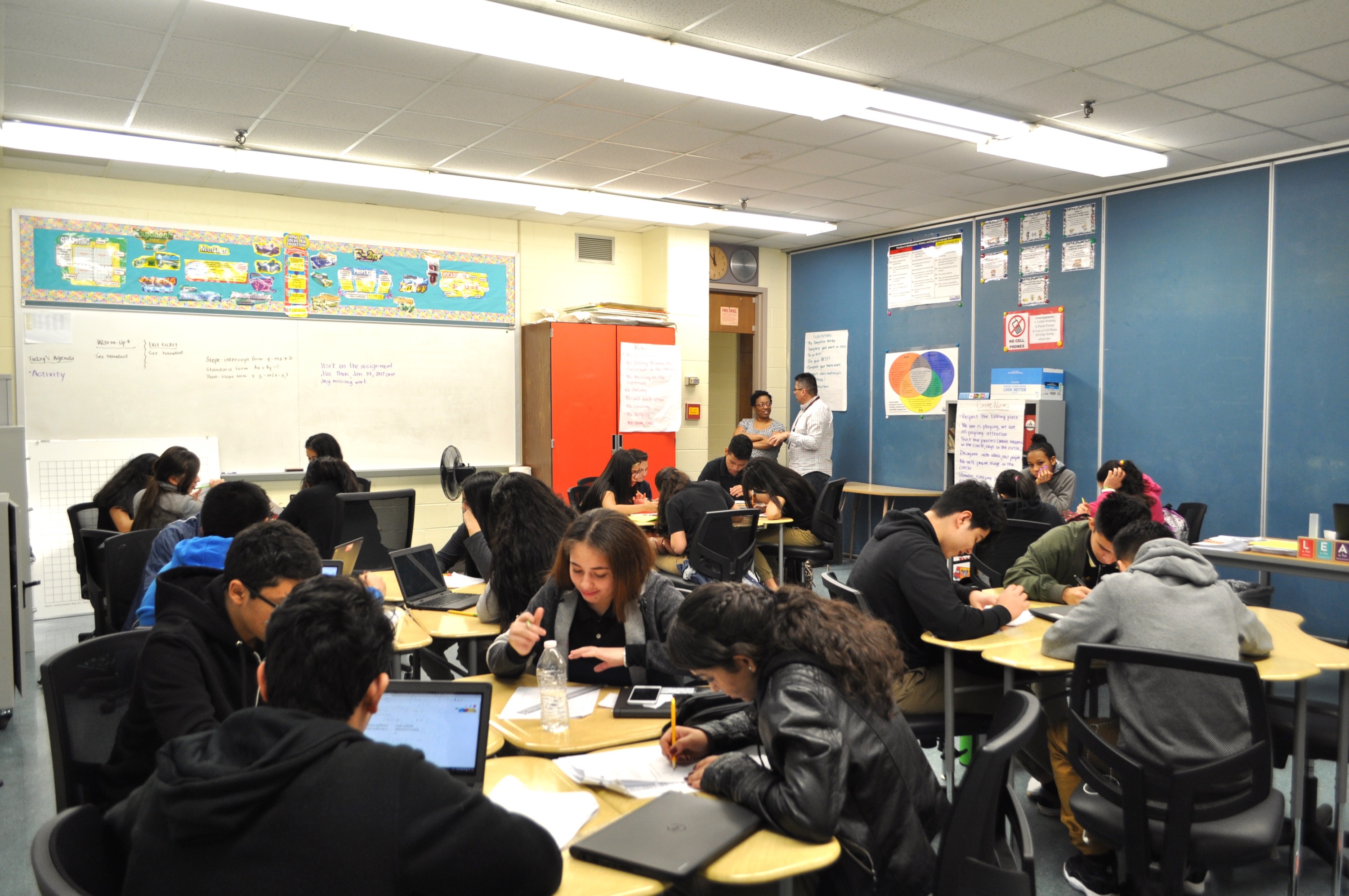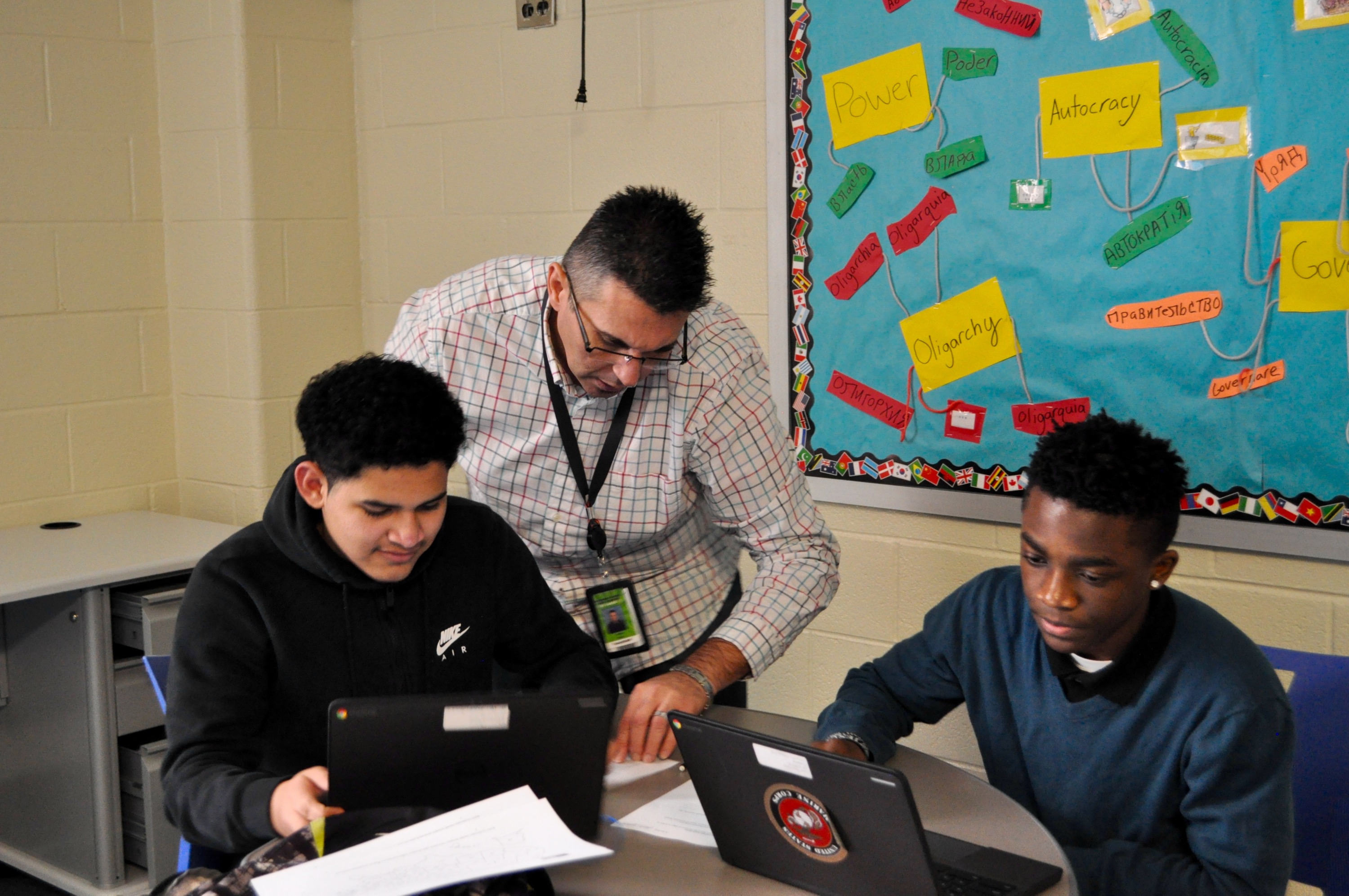Developing teachers is an essential part of any principal’s work. This can be a doubly challenging priority when a school doubles in size. Our partner schools generally grow a grade per year, meaning that Year 2 of a school’s existence is a time when the number of teachers doubles. As the school continues to grow, and more teachers come on board, the need for a well thought out teacher development plan becomes a top priority.
We sat down with Dr. Alison Hanks-Sloan, founding principal of International High School at Largo, to understand how she kept a focus on developing her teachers in a major growth phase for the school.
What are Pioneer Dialogues?
Pioneer Dialogues are a formalized staff development practice in which I meet with every teacher for a dedicated time to understand their current work, goals, ideas, and challenges.
How did you develop this practice?
When we launched International High School at Largo (IHSLA) in 2015, we were a very small team so it was easy to have open door policy; the staff and I were used to touching base regularly. Last fall when we doubled the number of staff (and students), I couldn’t devote as much time to spontaneous one-on-one conversations. I also had new demands on my time, making an open door policy very difficult. I struggled to find time to respond to the request for “just a few quick questions,” and I noticed that some staff members weren’t getting enough time or support. Additionally, though we’ve doubled, we are still a small team and we rely on distributive leadership, which means we all need to be on the same page. And, because design is an iterative practice, I wanted to ensure that I was hearing as many voices as possible when thinking about further developing the school model.
A big sign that something needed to change was spurred by a recurring off-handed joke from a new teacher. Each time I asked to have a conversation with him, he’d joke about “going to the principal’s office”. I realized the joke was a way for him to deal with something that he actually had some anxiety about as the result of his former experiences in other schools. At IHSLA, we’re dedicated to cultivating a culture where people feel safe and like their voices matter. I realized we need a formal structure to live out these core values.

How did you design this practice once you identified the problem?
My Springpoint leadership coach, Matt Pilarski, surfaced this as a suggestion. He’d worked with the founding principal of Denver School of Innovation and Sustainable Design, Danny Medved, to implement something similar. Matt and Danny kindly shared their templates with me and I worked with my team to customize and evolve this practice to fit our school and our culture.
As we developed this practice—which we dubbed “Pioneer Dialogues”—I knew it’d be important to make sure that each person’s time with me was sacred, with no interruptions or interjections. Similarly, I wanted to empower my staff with a feeling of ownership, which is why each person is expected to put together a robust, but feasible, agenda with the help of a template to guide them, as they were the lead facilitator in the discussion and topics.
Pioneer Dialogues start with a speed update for two minutes where the staff member throws out their most pressing question or issue that they want to discuss immediately. Once we tackle that, we frame the conversation around the four functions every teacher shares: team member, advisor, instructional facilitator, and curriculum developer. We discuss the areas in which they are feeling successful and where they are working to improve. There is also structured time for me to give feedback, for them to give feedback to me, and for us to focus on action steps. An ongoing Google doc helps keep track of conversations and decisions so there is continuity and follow through on both ends.
How has the reception of this practice been thus far?
My team of pioneers have given enthusiastically positive feedback about Pioneer Dialogues. They like knowing that they have uninterrupted time with me and a voice in the school overall. It’s helped build a mutual understanding that, as a school, we are focused on improvement and instruction. It’s also built relationships school-wide, strengthening our positive youth development approach.
I’ve also heard that Pioneer Dialogues have improved our team meetings. Since Pioneer Dialogues allow me to go deeper and surface new conversations with staff, I can make connections and prompt people to share thoughts and learnings in the larger team space. For example, I might see that someone implemented an approach that conveys a certain competency to students in an effective way. I’ll connect that teacher to someone who might be struggling in the same area. It has also helped with our special education coordination and lets us more deeply personalize learning for individual students. This all serves to build community connections—staff like to know that their work is helping their teammates.

How have Pioneer Dialogues evolved since you started?
When we first started Pioneer Dialogues, it was more open-ended. We’ve always had the speed update section but some structures have emerged that make these sessions more useful and efficient. For example, we frame the core of the discussion around the four functions of each staff member that I mentioned (team member, advisor, instructional facilitator, and curriculum developer). These role categorizations were developed in the late spring for a different purpose but we noticed that they translated well to the Pioneer Dialogue structure. And the inverse has proven true as well: the Pioneer Dialogue template has been adapted as a mechanism to guide other staff conversations. It’s interesting to see how iterating on our school design in one area can improve an entirely different part of our work.
Another change was that, at first, I had too much air time during the dialogue window, so I put a time structure around when I speak—first, it was five minutes and now I only structure about two minutes. Another thing we had to work out was the frequency. Everyone gets a Pioneer Dialogue twice per semester. But now it’s more flexible—some people need more time, if they are new or involved in something extra that needs leadership decision making.
What has been the biggest learning so far?
These Pioneer Dialogues have been a paradigm shift for me as a leader and for our school culture. I’ve learned a lot more about my amazing staff, and we have developed a stronger way of working together as a team. Importantly, these talks embody some of our core values as a school: the importance of teacher voice, leadership investment in teacher development, and a shared commitment to instruction. It has solidified these values and helped work toward the school’s vision.
Finally, as a leader, it has helped me let go of a traditional leadership role and share control with team members. This practice has built a lot of trust among my staff, particularly now that they’ve experienced Pioneer Dialogues in action and have realized the intent is not punitive or reactive—rather, it is a clear way to ensure staff have a voice in the school and the support they need to strengthen their practice as instructional leaders.